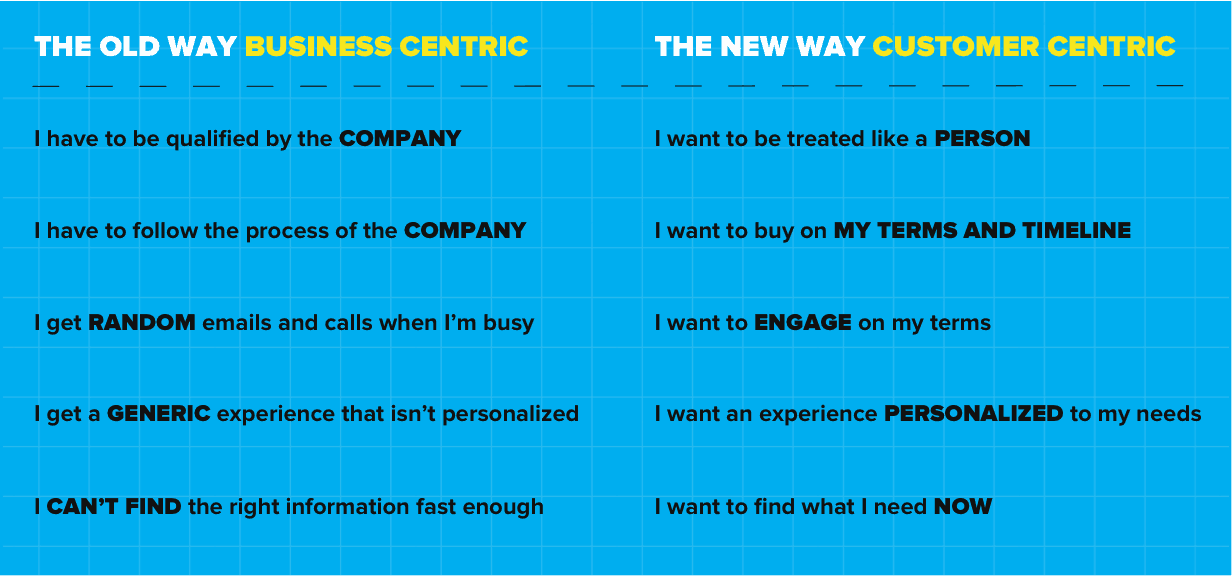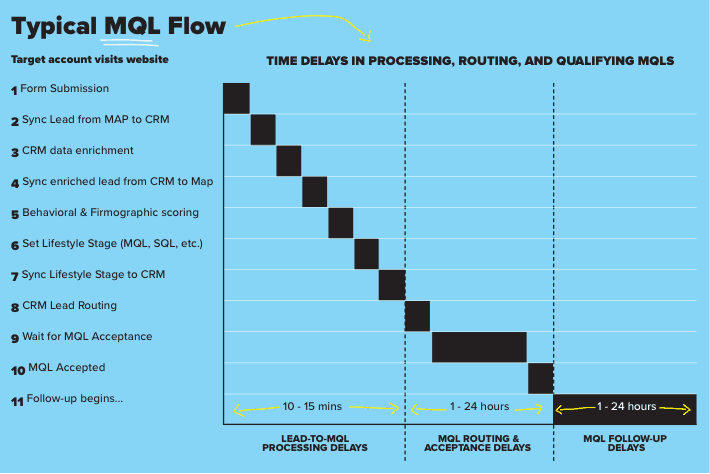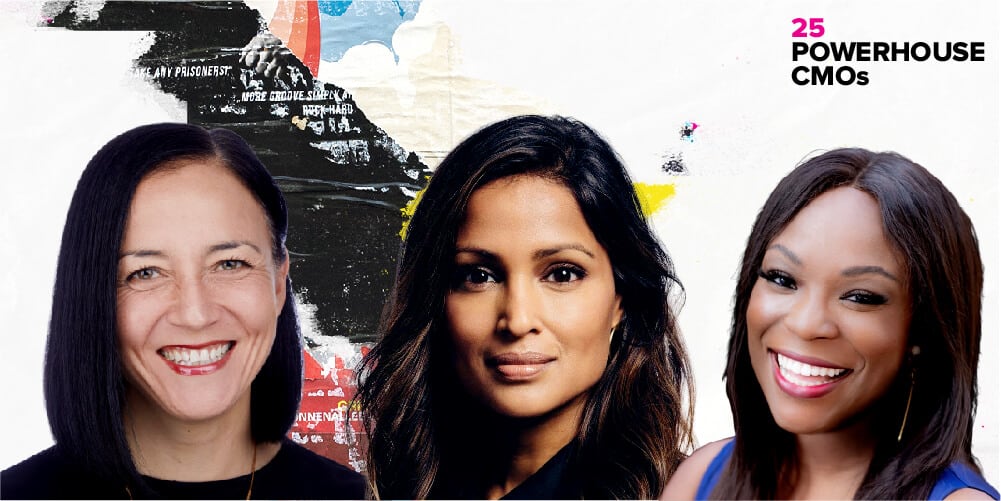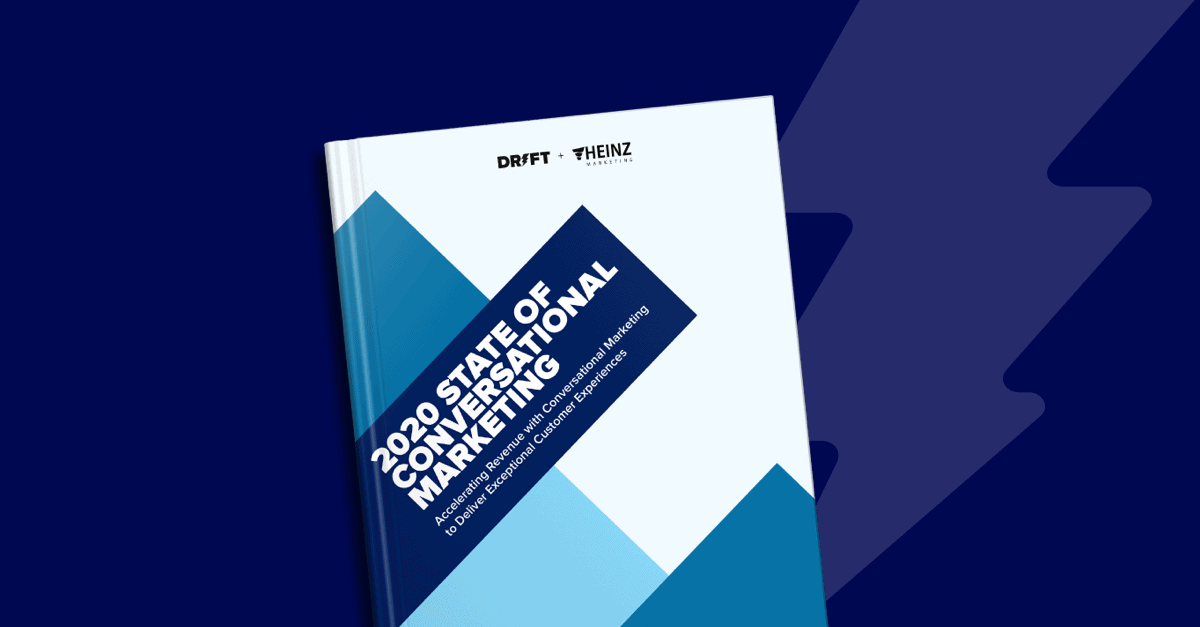
Marketing has long evolved from a single-channel focus.
Today, companies use a multi-channel marketing approach to reach customers on their terms. All of those channels, particularly websites, have created additional touchpoints throughout the customer journey.
Unfortunately, these touchpoints have also introduced more complications than conveniences for marketers and customers alike.
As it stands, the marketing industry is paying billions to push customers into “leaky” marketing funnels:
- In 2018, $5.12B was spent on driving B2B traffic. 98% of that traffic did not convert.
- From 2018 to 2019, customers grew more frustrated with not being able to find answers to basic questions and not having access to 24/7 service.
- 81% of tech customers don’t fill out forms when they encounter gated content.
- In fact, only 14% of people would prefer filling out a form to using a chatbot.
- When they do fill out forms, 58% of companies never follow up.
- If customers wait 5 minutes, there’s a 10x drop in connection rate. If the wait could be reduced to less than 1 minute, there would be 90% more opportunities.
In the midst of this digital transition, marketers, particularly chief marketing officers (CMOs), are being challenged to focus on the end-to-end customer experience (CX), not just the marketing and sales experience. Now, CMOs need to be concerned with every customer interaction, across every channel.
No small task, right?
Marketing leaders must now contend with how to make each customer interaction, especially digital ones, more authentic. And, of course, find a way to measure how these interactions impact larger business goals.
Today’s marketing leaders are looking to turn CX into a competitive advantage. To do this, they are asking the hard questions:
- How can we eliminate communication barriers between us and our customers?
- How can we make each touchpoint more authentic and human?
- How will these interactions improve customer satisfaction and change existing internal processes?
Enter customer-driven digital transformation. It’s a mouthful, we know. But, broken down both terms (“customer-driven” and “digital transformation”) should look mighty familiar.
The push towards customer-centricity has gained steam in marketing over the last few years for the reasons mentioned: To adapt to the needs of digitally-savvy customers, marketing leaders are now turning to technology to remove obstacles from the customer journey and offer relief to customers in real-time.
So what is customer-driven digital transformation and why does it call for a new approach to marketing?
What Is Customer-Driven Digital Transformation?
Simply put, customer-driven digital transformation looks to deliver better, more personalized experiences – at scale.
To do this, marketers need to better understand their customers:
- Who are they?
- Where are they coming from?
- What are they trying to accomplish?
- And finally, how does all of this align with your business goals and what you’d like the customer to accomplish next?
To answer these questions, marketing tech stacks must evolve.
CMOs are now asking themselves which tools in their tech stack can empower and enable customer interactions across not just their websites, but dozens of activation channels as well.
If done incorrectly, digital transformation can easily create more hoops for both marketers and customers to jump through.
As previously mentioned, $5.12B annually on driving B2B traffic means no matter what industry you’re in, it’s a crowded space. While other marketing leaders and CMOs are spending all their time and money on getting customers to their sites, it’s time you started considering what comes next. Every product or service is commoditized (or about to be commoditized), which means there are several, if not dozens of direct competitors vying for the same customers’ attention (and dollars).
One way marketing leaders can differentiate, compete and plug the “leaky funnel” is by coupling digital transformation with customer experience initiatives. You’ve done the work of getting people to your site. Why make it difficult for them to convert once they arrive?
Often, marketers force buyers to jump through hoop after hoop and then call that a funnel. Why not simply ask what they’re looking to do next and how you can help them do it?
For those CMOs and leaders ahead of the curve, that’s just what they’re doing. And, yes, they’re doing it at scale.
What is Conversational Marketing?
Conversational marketing is the fastest way to move buyers through your marketing and sales funnels using the power of real-time conversation. It builds relationships and creates authentic, personalized experiences with customers and buyers now.
“[Conversational marketing has] helped with our opportunity creation to the point where we think that Drift has contributed almost $1M in Q1. Mind you, the product itself has not been fully implemented. We’ve only scratched the surface. So, if it’s $1M and we’re only at 40% in terms of what we can do, think about what we can do in Q2, in Q3, and Q4.”
– Jeanne Hopkins, CMO of Lola.com
Conversational marketing leverages targeted messaging and intelligent chatbots to engage customers on their time. It allows you to instantly connect with high-intent visitors with the right message at the right time.
Conversational marketing empowers your customer experience and plays to their emotions. The payoff for pulling this off is huge: A recent study found 71% of customers would recommend a brand they love to their colleagues and industry peers.
“Being a CMO, I think, is a lot like being a ringmaster of a circus. Being a ringmaster of the circus, obviously, you have a lot of things going on around you, you’re orchestrating a show. You’re orchestrating a performance and there’s a lot of characters in that, whether it’s the elephants, whether it’s the trapeze artists. All of those come together in an orchestrated fashion to really put on a good show. That’s what I really think good marketing, and good marketing departments, are all about today. […] You either need to make people laugh or cry. You’ve got to make them feel something emotionally.”
Bringing that emotion to the center of the ring is what humanizes the data, the marketing.
As Alicia Hatch, CMO at Deloitte Digital, said, “Humanizing data allows us to become more human marketers.” That intersection of technology and human emotion is where conversational marketing thrives.
We’re currently seeing the rise of what we call “conversational natives.” Many of your customers are now accustomed to a world of messaging, pictures and videos. They expect businesses to provide relatable customer experiences that arrive on their terms. And if businesses can’t deliver? Conversational natives will simply find someone else to talk to.
How To Thrive During A Customer-Driven Digital Transformation
So, how do you use conversational marketing to tackle the digital transformation and provide a stellar customer experience? It comes down to three steps.
1. Stay Close to the Customer
You need to have a clear understanding of who your customers are. As a CMO, you have to stay close to your customers, a principle that should be embedded in the culture of the entire team. You should be learning from your customers. And not just their behavioral data – you need to talk to them as well.
Look for answers to the following:
- Who are my customers? How do they self-identify?
- What motivates them?
- What scares them?
- What hesitations do they have?
- What frustrations do they have?
- What do they struggle with, personally and professionally?
- How and where do they spend their free time, offline and online?
- How do they prefer to engage? At which times? In which contexts?
- What problem does my product or service solve for them?
- What matters to them when they’re making a purchase decision? Do they comparison shop?
Notice that these questions are not exclusively related to the buying process. You want to understand them as whole people, not just as customers.
Conversion research can help you find answers to these questions (and many more – only your imagination is the limit). Caution: While you may think you already have the answers to these types of questions, it’s still important to have regular conversations with your customers. Things change because people change.
To begin transforming your business and improving your customer experience, you need to have a thorough understanding of who you’re looking to engage with and convert.
2. Evolve the Culture
Moving from a business-centric culture to a customer-centric culture is difficult, but crucial to remain competitive.
Driving this culture starts with you, the CMO.
It’s not enough to say you’re going to be a customer-centric business now. You need to develop and implement real strategies to shift and evolve the culture slowly over time.
This can take many forms. For example, you might enable your team to:
- Mine customer support tickets
- Shadow sales calls
- Review customer interviews
- Connect with customers in person at industry events
Naturally, customer-centric thinking will blossom. You’ll shift away from telling the stories you think your customers want to hear and toward telling the stories of your customers. Slowly, the customer will become the center of your decisions, from how you generate demand through to how you retain business.
The new role of the CMO is to start conversations with customers and deepen relationships. Of course, your primary goal should be pipeline and revenue, but all of those conversations will impact your bottom line and your entire customer experience.
You’ll end up with more qualified leads, faster lead response times and more revenue. But first, you need a team that’s bought into customer centricity and measurement tools that allow you to quantify the impact of conversations.
This can seem overwhelming, given the legacy systems and technology many companies are dealing with. But you don’t need to rip out and replace millions of dollars of technology.
Instead, you can layer conversational marketing on top of what’s already in place. Why? Because at the end of the day, you still need all of that legacy tech and data. How else will you personalize the customer experience with conversational marketing? It’s not the foundation of your business that needs to be replaced, it’s simply a shift in approach.
Aligning marketing and sales is another factor. Unless both teams are sold on the customer-centric approach, conversational marketing will fall flat. There is no line in the sand here, so both teams will need to leverage conversations to create a cohesive customer experience. This extends all the way through to marketing and sales leadership, the Chief Revenue Officer, Chief Sales Officer, etc.
You see, it’s not enough to just start a conversation on a landing page. It’s about deepening the relationship and starting more conversations throughout the customer experience. If marketing, sales and, arguably, customer service, are not working together in lockstep, you’ll be leaving money on the table. As the CMO, it’s your job to partner and align with those teams.
3. Use the Conversational Marketing Blueprint
At Drift, we have the Conversational Marketing Blueprint:
As you can see, there are five factors to consider when using conversational marketing with your customers:
- What? What are they looking at right now? Which page or piece of content are they viewing? What are all of the pages that make up your site? There’s the homepage, product pages, the contact page, blog pages, etc. Which pages do you want to personalize for the customer? Which aren’t as important? How will personalizing Page X benefit the customer? What will it help them achieve?
- Who? Who is visiting your site? What do you know about them and their motivations, frustrations, problems, hesitations, etc.? There are many different types of people arriving. People with different emotions, different motivations, different levels of intent, different levels of awareness, etc. Think about that in aggregate. What’s the page’s purpose? The answer to that question will help you define the intent and awareness level of the average customer arriving on the page. Purpose, intent, and awareness need to be in harmony.
- Where? Where did they come from? Which activation channel did they arrive from? Was it a particular ad or campaign that drove them here? It’s time to evaluate all of that money you’re spending to get people to your site. Are people arriving directly by typing in your URL and stumbling around from page to page? Are they arriving via a specific keyword? A specific social media campaign? Maybe an email newsletter? Understanding where someone has come from can help you more effectively guide them toward where you’d like them to go.
- Why? Why are they here? What do they need from you (an answer, guidance, etc.)? Are they ready to speak to sales? Do they need to connect with customer service first? You have to examine it from both sides. Why are they on the page and why are you trying to engage them in conversation? Those two things need to align. This goes back to ensuring purpose, intent, and awareness are in harmony.
- When? Well, this is a trick question. The right time to engage is always now – when the prospective customer is showing intent to convert. This is up to the customer. Your role is to be ready when the customer is ready. They may want to start a conversation at 11 a.m. on a Monday or 11 p.m. on a Saturday. Maybe they’re in a different time zone, a different country where it’s not a holiday, etc. When the customer wants to engage, you have to be ready to engage with them and deliver the outcome they’re seeking. It’s experiences and outcomes that matter more than anything today.
You can’t prescribe a funnel to a living, breathing human. You have to simply make it easier for them to travel the path they want to take. It’s rare that two customers go through the exact same experience. CMOs now need to be purposeful about how those unique experiences are personalized.
Over the last decade, CMOs have moved towards tech-centric and data-centric marketing. Now, to thrive during this new digital transformation, you have to use that technology to add the human touch back into marketing.
When you have sorted through the five Ws of the Conversational Marketing Blueprint, each person will experience a unique, personalized path – and your bottom line will thank you.
Feed The Conversational Marketing Flywheel
As you begin experimenting with conversational marketing, you’ll begin uncovering insights, which will lead to more effective experiments.
What’s important is that you start somewhere. Don’t overwhelm yourself with the possibilities. Start where you are, start where your customers are.
Typically, that means:
- High intent, low traffic pages.
- Low intent, high traffic pages.
See what works, see what doesn’t. What makes the customer experience seem more personal? What doesn’t? Where is personalization impactful? Where does it matter less? What’s too personalized? What’s not personalized enough? Does personalization matter more for this segment? Less?
Each hole you plug with a new form of personalization helps solve your leaky bucket problem. With every plugged hole, your customer acquisition cost (CAC) is reduced and your LTV is increased.
The great thing about this process is that it’s a positive feedback loop of constant improvement based on what’s working for your specific audience. Slowly but surely, you’ll chip away at that 98% of people who don’t convert, and you’ll feel the impact throughout the entire customer experience.










